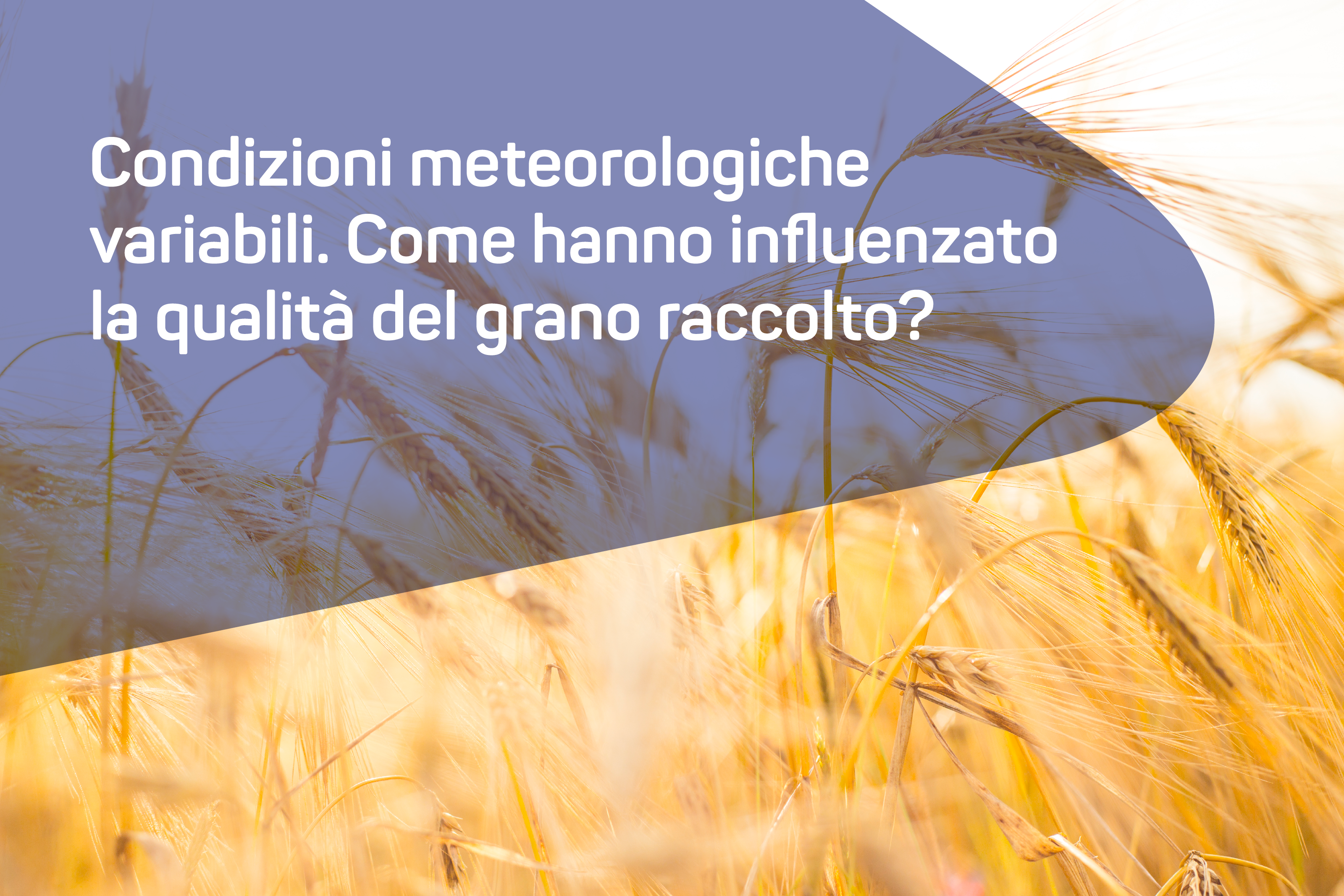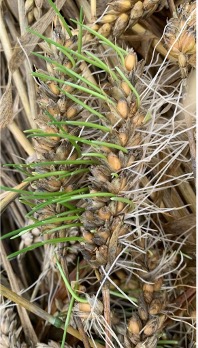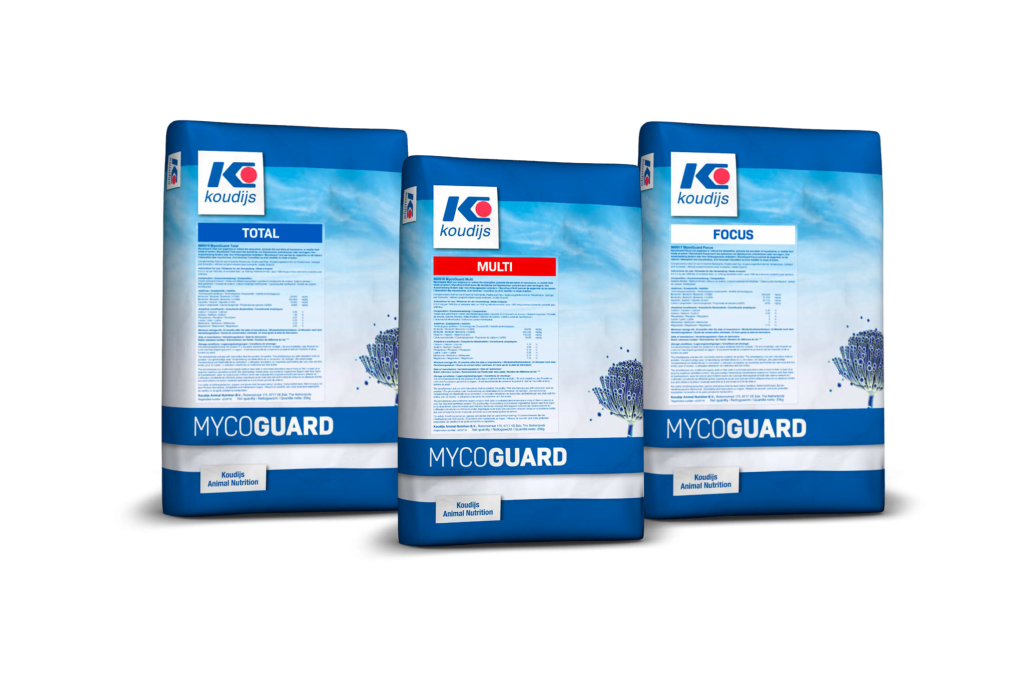
Mycotoxins and Quality of Wheat

We all witnessed that the climate was highly variable last summer. After the barley harvest during the dry season, prolonged periods of precipitation began. In many places in Europe, other cereals were harvested later under less than optimal conditions. Overall, barley exhibits very good quality; however, wheat, as well as triticale and rye, show considerable variability..
Increased Risk of Sprouting and Lodging
If cereals, especially early varieties, cannot be harvested in time, sprouting and lodging can occur. “Sprouting” means that wheat grains begin to germinate in combination with wet conditions in the crop. If sprouting occurs but is still in an early stage and can be adequately stored dry, the impact on feed quality will be manageable. “Lodging” refers to the crop lying flat, making harvesting more challenging. This will result in more weed seeds among the grains. In combination with sprouting and lodging, the moisture level of the harvested grain is crucial. Grains stored and inadequately dried can continue the sprouting process, allowing mold development.
Significant Variations in Protein Levels
Suboptimal harvesting conditions, such as sprouting, lodging, and precipitation, can reduce the quality. We are observing highly variable protein levels in wheat this season. Additionally, for several years now, we have noticed that, in some regions, reduced fertilizer usage due to regulations is leading to a decrease in protein levels. Due to the war and limited availability of nitrogen fertilizers, wheat, mainly from Ukraine, has also shown lower protein levels this year.
Mycotoxins have been relatively low so far, but they vary from region to region.
Contrary to expectations, we have not observed higher levels of mycotoxins in wheat from Northwestern and Central Europe so far. However, it is wise to remain vigilant, as mycotoxins can develop even during the storage phase, and most of the wheat was harvested with high moisture levels. We have analyzed some wheat batches from Southeastern Europe with high levels of DON (deoxynivalenol).

Pay attention, analyze, and take action.
We have heard reports of cereals being earmarked for biogas production, but we all know that, fundamentally, most of the wheat will end up in the compound feed market. Visual inspection provides a lot of information. The importance of near-infrared spectroscopy (NIR) analysis for feed estimation value is even more critical when dealing with significant variations in quality. In the case of sprouting and lodging, the hectoliter weight of cereals will be lower; current analyses show significant variations in hectoliter weight. Moisture levels and grain weight also influence hectoliter weight. In case NIR analysis is not possible, these three parameters can help indicate quality (see the table).
Table 1: Indicative Standard Cereal Intake
|
Cultivation |
Minimum hectoliter weight (kg) |
1000-grain weight (grams) |
The maximum moisture content for safe storage. (%) |
|
Maize |
>70 |
250-350 |
<14 |
|
Rye |
>70 |
40-46 |
<15 |
|
Wheat |
>74 |
42-48 |
<15 |
|
Triticale |
>72 |
40-48 |
<15 |
|
Barley |
>65 |
40-45 |
<14 |
|
Oats |
>50 |
38-45 |
<14 |
* A lower hectoliter weight is an indicator of contamination levels.
** A grain weight above 1000 indicates low bran content and, therefore, higher nutritional values.
*** The hectoliter weight and 1000-grain weight should be measured at a standardized moisture level.
It is advisable to separate wheat by quality and store and process it separately. Cleaning the grains is even more crucial when the quality is low. As mentioned earlier, the quality of barley is generally good. We are eagerly awaiting the new corn harvest.
Maberth, in collaboration with Koudijs, is capable of assisting its clients with various solutions that allow for the detection of mycotoxins in raw materials, tailored to the specific type of contamination. This helps reduce the risk of health issues for animals.
Would you like more information? Please send an email to info@maberth.it or call 0376 321803.

